SEARCH






|
|
|
|


by Editor Marius Cinteză
Published the 31st of July 2020
Ovi D. Pop represents a well-known landmark within the Romanian and even worldwide photography landscapes. With more than 30 years of photographic experience, he prefers portraits, nudes, aerial and street photography. In 2013 his photographic activity took a turn towards the artistic side and he managed to become an EAAFR artist (Romanian Association of Artist Photographers) and E.FIAP/b artist (Excellence of the Fédération Internationale de l'Art Photographique). He won more than 970 awards (276 gold medals/1st place/trophies) in 71 countries and held many individual and group photography exhibitions worldwide. He was a member of the jury for important international photo contests and in 2016 he started the first authorized Photo School in Oradea (Romania).
It is my pleasure and honour to introduce you Ovi D. Pop in the interview below!
Please join me and discover more about the man behind the camera and be inspired by his remarkable photography projects!
Ovi, first of all I would like to thank you so much for taking your time to answer my questions!
To begin, please introduce yourself shortly and tell us more about you, your hobbies or other projects you are involved in!
I want to say first of all that I am honoured to give this interview to 1x.com and thank you for this opportunity! I am Ovi D. Pop, I am a photographer artist from Oradea (Romania), I have been running an advertising and publishing company for the last 26 years and I am the father of two wonderful children. My biggest passion is photography, which has been fascinating me since I was 14 years old. I fondly remember the first camera I used, a Cmena 8, my mother's camera, which I took with me to athletics competitions and training camps. I have always been a very active person and I think that is reflected in my photos. I really like that side of photography that keeps me active both physically and intellectually. I never liked to sit in the laboratory and develop photos - I like a lot the way the photographic technique has evolved. Besides photography, I really like to play tennis, I like hiking in nature and off-road trips, I like to travel, to meet new people and discover new cultures. At this moment, the "project" that demands the most from me is my one-month-old daughter!
Let’s start from the beginning: one of your first photographic projects was to promote Oradea city and Bihor county (Romania) in a book (“Illustrated monograph of Bihor county”). Can we consider this as your first step in the photography world? What meant to you to promote your native places through your photography?
My beginnings in the world of photography date back to the founding of my advertising company in 1994, when I photographed everything that was necessary for the promotional materials requested by my clients. In 2000 I realized that Oradea city and Bihor County do not have a tourist guide, so I decided to edit the first one after 1977, but many of the photos I used were bought from enthusiast photographers. In 2005 I published the first edition of the “Illustrated Monograph of Bihor County”, which contains mostly photos taken by me while visiting all 400 villages in the county. At this moment, we have reached the 7th edition, and the latest edition contains photos taken by me exclusively. I am very proud of the fact that this book has become a real business card of Bihor County and has sold over 13,000 copies! This project is one of my favorites, even if it doesn't require much of my creative side. It was a great pleasure for me to visit and photograph every village in the county, as well as to interact with many special people I met during my travels. This project also brought me an extraordinary image capital.
For many of us photography is either a hobby or a way of life.
How would you define your relationship with photography?
One of my partners once told me that I have two wives: my real wife Antonia and the photography! The truth is that I go to bed and wake up by thinking of a new photo or posting my photos. Due to the fact that I teach photography courses, I am always paying attention to the news, to the winners of various competitions or to what is new on 1x.com, for example!
What would be the most important experience so far that has influenced your steps in photography?
I think such an experience was a trip to China: in 2012 I was invited to go to Beijing. Here I reconsidered my entire relationship with photography and changed my perspective on photography. Until that moment I was more interested in documentary photography and less in artistic photography; this changed during this trip. When I got back home, I started going to the Nufărul Photo Club (Oradea, Romania) internal meetings, where the photos taken by the members were analysed and discussed. This helped me a lot and I can say that it was the beginning of my journey in terms of my relationship with artistic photography!
When have you realised that you would like to follow a career in photography?
As I said before, the photo critique sessions at the Nufărul Photo Club (Oradea) were very helpful in training me as a photographer and also during this period I realized that I want to become better and better in this domain. Since then I have tried to improve as much as I could. This is a process that will probably go on all my life, because you never know enough. I didn't think about a career then, but now I can't imagine my professional life without photography!
How do you maintain and grow your passion for photography?
I think that the beauty in photography consists in the multitude of possibilities, ideas, titles to conquer, etc. Of course, another challenge (and also a desire) for me is to make my photos accessible and admired by as many people as possible, people with different backgrounds and tastes. Probably that's why I enjoy participating in international photography competitions so much, because it helps me to check if my works manage to capture the attention of juries members from the different countries and cultures.
Can you please describe in a few words your photographer philosophy and mission?
I strongly believe in the power of inspiration and spontaneity. My creativity is triggered by various elements from the outside, it can be a decorative element of a building, a certain pattern, which I can imagine what it looks like seen from above, a scene from the street, a face, etc. First, the photo is taken in my mind, I imagine it for the first time, I frame it and I shoot. I like to use post-processing in my photos because it helps me be creative and materialize my ideas. I think the story, the message are the most important elements in a photo because an image must communicate with the viewer, otherwise it will be quickly forgotten or it will not attract attention. My mission as a photographer is to communicate with my audience through the images that are first born in my mind and then take shape on photographic paper. These images are deeply personal to me because they are shaped by my imagination, but I have immense satisfaction when I see how many people relate to them!
Ovi, one can say that you are one of the most appreciated and awarded photographers in Romania!
You have won hundreds of golden medals and important prizes so far!
What significance do these awards have for you and your career and how did they influence your artistic vision? What was the most important award so far?
I rejoice as a child with every medal I won, knowing that the jury chose my photo against other works. I noticed that the awards brought me other benefits as well, in addition to personal satisfaction: an increased number of sold books and albums (I currently have 4 titles of my own for sale) and the more students attending my technique and photographic art course. I also noticed that I am invited to take part in several photography camps and juries for photographic art salons (before the pandemic, of course), both in the country and abroad. Who doesn't like to travel? As a child, I dreamed of seeing the world! Now, thanks to the international awards and recognitions that I have obtained, I have managed to reach many dream locations!
My most important prize was winning first place in the abstract category at the first edition of the Drone Awards, 2018, in Siena. Being the first edition of this category, the winning photos were broadcasted on many media channels, including CNN or CBS.
Portraiture art is one important part of your photographic activity. What do you think are the top three secret ingredients for a remarkable portrait?
Personally, I think that for a successful portrait we need, in addition to good lighting, to capture the emotions and expressions that the model can provide. Contrary to most people's beliefs, expressiveness matters more than beauty. If the model is not expressive, the portrait will not be successful. When I want to take a portrait, I always try to interact with the model, to bring him / her to the mood I want to capture. The successful portrait photographer is the one who manages to capture and convey a certain emotion. The stronger the image is through its message, the more valuable it is.
I would definitely like to mention here the photography on the street. It is fundamentally different from the studio one, because here the model does not necessarily interact with the photographer. In this type of photography the skills of the photographer in handling the camera, a good lens and the presence of spirit of the one behind the lens are the key ingredients for success!
Where do you look for to find inspiration for the stories you want to convey with your portraiture works? What inspires you?
I am very inspired by the great masters of painting: Jan van Eyck, Van Gogh, Rubens, etc. However, the painters have more time to create their stories in their works, while the photographers are forced to act much faster. But I think a rich visual culture helps in becoming more creative.
The success of model shooting sessions depends heavily on the model skills, on one hand, but also on your 'stage director' skills, on the other hand. How do you manage to successfully communicate with the models, to make them fit in your story and to get the most of the mood from their performance in front of the camera?
I think most of us have imagined that we are different actors playing in our favourite childhood movies. I was always fascinated by the stage directing process. That's kind of what I imagine I do when I want to create a certain photo that conveys a certain mood. As for the models, I always tried to discover new faces, to be the one to shape them as models. I work a lot with girls who haven't done modelling before, who don't know how to pose, but whose faces inspire me. This can be an advantage, but also a disadvantage. The advantage is that I can form them and they are more flexible, the disadvantage is, of course, the lack of experience. Indeed, a professional model is better prepared and knows how to pose, but a good model is too much photographed and seeing the same face in the photos of several photographers can be boring and redundant somehow. Another disadvantage is that the models tend to adopt studied posing, and in some situations this bites a little from their naturalness and makes them less receptive to what I want to achieve.
The artistic nude is also another area of interest for you. Your nude works are very well known and they were awarded world wide! What are the main challenges of the nude sessions? Do you have a plan before or you improvise?
I am convinced that artistic nude is one of the most difficult and complex genres of photographic art. It was made since camera photography exists and I would add the fact that the artistic nude has very deep roots in the visual arts. That is why it is very difficult to bring something new in this field. In addition, finding models is more difficult due to the shame and modesty characteristic to our people. As a photographer, it often happens that you find models who want to pose for nude photos, but do not agree to see their face, being concerned that they will be judged. This is a mentality issue and I think we should overcome it and not confuse artistic nudity with pornography, because these two concepts are fundamentally different.
As a nude photographer I consider that the first award-winning nude is more difficult to create; then the rest comes naturally... It is difficult to create your own style, I try to use my models in various geometric fantasies. When I shoot, I often start from certain ideas, but for the most part I improvise. Then the best photos come out!
You have won many and important awards in the aerial photography domain and your amazing works inspire other drone photographers already. What makes you so drawn to this photography genre?
During the period when I started editing my first photo albums with Oradea and Bihor County I noticed that aerial photography fascinates the viewers the most. I rented a plane and photographed all the architectural monuments of the county, giving the viewer a new perspective on the places he/she knows. That's how I earned my reputation as an "aerial photographer" or "cloud-headed photographer." For a while, this was a niche that I considered mine, then the drones appeared during the period when I was trying to recover from the bankruptcy caused by the crisis of 2009-2011 and I lost ground. When I bought my Mavic Pro, I quickly tried to regain my audience back, but I realized that it is no longer enough to simply photograph from above. I had to be original, do things differently. This is how the idea of ​​capturing different locations in different seasons was born, in order to overlap them thus forming a single image. These were the ones that brought me world fame. I didn't think they would have such a big impact when I created them!
Can you please tell us something more about your workflow for aerial photography?
Everywhere I go I have one of my drones with me. As a photojournalist, I am wide-eyed to capture something new for this kind of photography. In addition, I always try to imagine what everything I see looks like from above, I have already formed an automatism. If the location allows, I lift the drone and create my frame. But many times I prepare myself by checking on Google Maps, if I see something interesting that would be useful in a future project.
Another important part of your photographic activities is focused on teaching photography classes and sharing your vast experience with others. What do you think are the challenges of this activity, especially in these days of coronavirus pandemic?
I have always liked to share my knowledge with those interested, now I can do this officially, so to speak. I am very happy when I see my students excited and happy when they get beautiful frames. Now, in the context of the pandemic, it was a period of 3 months when we held the online courses, the theory part; we all waited to do the practical part because without that I can't conceive the efficiency of a photography course.
Ovi, for some time you have been a member of the juries of some prestigious national and international photography competitions.
What are the main challenges and rewards for you as a jury member?
Becoming a member of the jury was one of my most daring dreams as a photographer. When you become the one who decides which photos will be the winners of international photo contests, with thousands of participants, it is often something very special! I'm glad I'm invited to judge more and more often. Until the pandemic, these jury activities also meant trips to various destinations around the world, some of which being: Sydney, 4 times in China, India, Indonesia or New York. I am very happy that due to my work as a photographer and my success I had the opportunity to see the world! Now, during this period, I can only judge from home, online…
You travel a lot and you get to know many known photographers, thus having access to different cultures and photographic visions. How does this influence your work?
Wherever I was, I learned something new from the photographers I met or, more recently, they also learned from me. I went everywhere with an open mind and absorbed information. But, I not only learned how to do some things, but also how NOT to do them. For example, some photographers stick their finger on the shutter and even a portrait is shot in burst mode or others use a tripod even if it is not really needed.
You mentioned that you have been through difficult moments both in professional and artistic life. How did you overcome them? Do you have any advice to share?
Positive thinking and also photography have always helped me in these situations. I was escaping into my little world, which I was trying to shape through various processed creations. Through the photographic art I have created another reality, and if others like it, I try to charge myself with beautiful words and positive energy that is directed towards me, so I have become better and more tolerant. There are also in our world various people who try to slander the successes of others, but I do not look at them, I always look at those who are better than me, they are the ones inspiring me and making me better.
My advice for any photographer artist, and not only, is to stay on his path, to appreciate the work of others and always remember that art is not measured in centimetres: everything is subjective in this area. With a positive thinking and openness that characterizes me, I have chosen many friends, both virtual and real, whom I am honoured to know and admire very much.
Many are of the opinion that the gear is not very important when the passion for photography is strong. However, can you please share with us what gear do you use (camera, lenses, tripod, drone, etc.)?
I'm a Nikon fan, I use D850, D750, D600, D5600 and AW1. The first prizes came from a rumbled D80, and then I realized that the device does not always matter. I had colleagues with top gear but zero vision... For the lenses, I tried to cover the whole range of focal lengths: 10.5 mm Nikkor, 50 and 85mm Nikkor, 24 - 70mm, 70 - 200mm and 150 - 600mm from Sigma. I failed to be equipped with the entire Nikkor range, but I showed to my students that it is not always the best lens that makes the difference, but the approach. For the drones I opted for the lightest equipment, so I could wear them anywhere in the world, even if I didn't always have the courage to pick them up: Mavic Pro and Mavic Pro 2. My studio is equipped with Elinchrom 2 x 500w Godox 2 x 600w soft boxes with external battery and various continuous LED lights.
What would be your favourite photo from the last years? Please tell us the story behind it.
Naturally, the most awarded is “Dead or Alive”. This has its origins in the “Weather Snake” photo, the one I won at DRone AWards, a photo composed of two frames, photographed in two different seasons, summer-winter. I was with my wife when I took the summer part of the photo. Later, I remembered the paintings that presented the same frame with all the seasons, which I saw while I was a student at the Faculty of Arts in Oradea. I couldn't wait for winter to come and take the winter photo of the frame from the same place… The snow was long expected that year, but it only came in April. In the summer of 2018 the photo won a gold medal in New York, in autumn at the first edition of the Drone Awards she won the grand award in the abstract category, then, thanks to it, I became the Photographer of the Year in Romania. After collecting several awards, I came up with the idea to change the frame a bit, so “Dead or Alive” was born, and has collected over 150 awards in 40 countries so far!
Who are your favourite photographers or mentors whose works have influenced you and your photography?
I don't have a mentor, but I try to draw my energies from the works of several famous photographers. However, Man Ray, Brassai or Cartier-Bresson can't help but impress me.
I know that your family got larger recently and you have a little daughter! Congratulations! How does your family involve and participate in your projects? Is family support important for your success?
The first gold medal was won with a photo representing my son, I won several gold medals with a portrait of my wife, which is a real support engine for my photographic projects, and the results can be seen, my activity blossoming from the moment we met. She always supports me and contributes with ideas. Our little girl is going to enter my future projects soon!
We almost reach the end of this interview and I would kindly ask you to share with us your future plans or photographic projects you would like to be involved in.
I would very much like to enter the world of famous galleries, to try to exhibit my photos in as many places as possible and, of course, to be able to sell them!
 | Write |
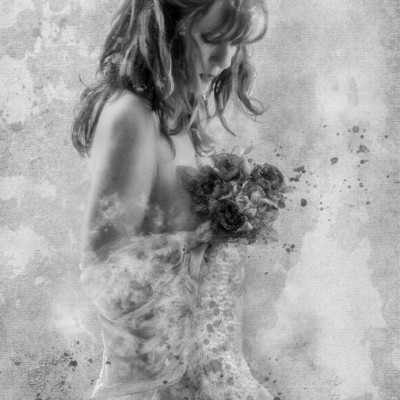 | Charlaine Gerber PRO Great creative work, well done! |
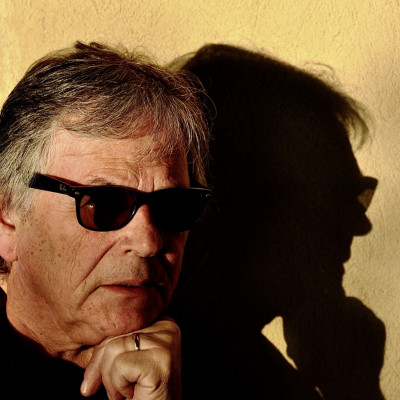 | Arnon Orbach CREW Dear Ovi, you are undoubtedly one of the best creative, and varied photographer and artist. Your works are mesmerizing and shows your fantastic talent. Beautiful interview and great insight into your work. My compliments for this interview and to Marius and Yvette for their editing. |
 | Marius Cinteza CREW Many thanks, dear Arnon!! |
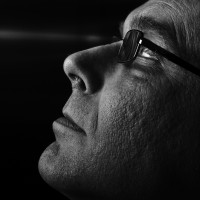 | Luc Stalmans PRO Rocking and Inspirational Story my friend,
|
 | Marius Cinteza CREW Thank you, Luc!! |
 | Massimo Petrarca All my best congratulations for the prize and for the wonderful photos and magnificent post processing .
Max |
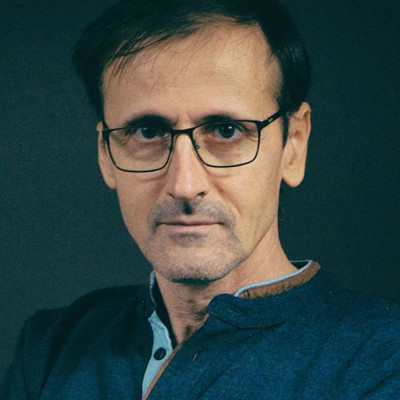 | Mihai Bogdan R Rock! :) |
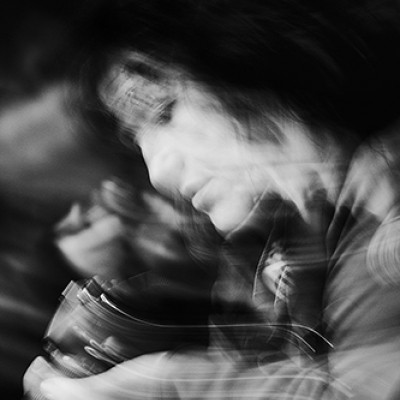 | Elena Raceala CREW Amazing work, Ovi ! Great interview, Marius ! Congrats !! |
 | Marius Cinteza CREW Thank you so much, Elena!! :-) |
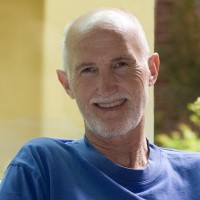 | Wayne Pearson PRO Thank you very much for your story and magnificent examples of your photography, your work is an inspiration Ovi! Thank you too Yvette, I always enjoy your wonderful interviews, I am sure that most of us don't fully appreciate how much research and work goes into producing, and writing your interviews, we appreciate your effort! |
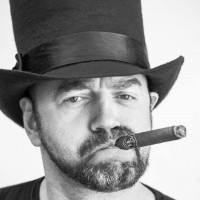 | Ovi D. Pop PRO I am honored! |
 | Ovi D. Pop PRO Thanks a lot!!!! |
 | Yvette Depaepe CREW A pleasure to publish your fine interview, Ovi !!!
Thanks for your fine collaboration and for sharing your beautiful work on 1x. Cheers, Yvette |
 | Marius Cinteza CREW Thank you, Ovi, for the collaborating effort!! It was an absolute pleasure working together for this interview!! |